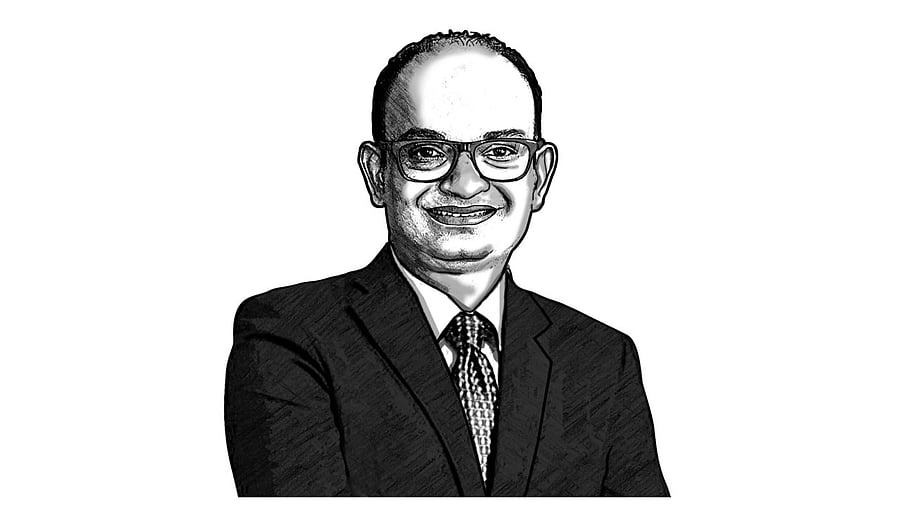
Gopichand Katragadda The former CTO of Tata Group and founder of AI company Myelin Foundry is driven to peel off known facts to discover unknown layers @Gkatragadda
As a child growing up in Bangalore, commerce had many faces. The ‘Setty’ shop at the street corner catered to daily cravings with chikkis and chewing gum. The more established Komati store, located on the main road, handled the monthly supplies of grains and sugar. Western cosmetics and novelty products? That was the domain of the Maruti store. Although I was unaware of it at the time, these shops reflected a much more profound legacy of merchant activity in the southern peninsula.
South India has long been home to prominent trading communities – among them the Komatis, Chettiars, and Banajigas – whose histories are closely intertwined with the evolution of merchant guilds such as the Ayyavole 500. These guilds were sophisticated socio-economic institutions with cross-regional influence and even diplomatic presence across South and Southeast Asia.
The Ayyavole 500, also known as ‘the 500 Swamis of Aihole’, were a formidable transregional trading guild. Rooted in Karnataka, they wielded influence from Maharashtra to Tamil Nadu and extended their reach to Sri Lanka, Java, and China. Inscriptions from as early as the 9th century describe their reach poetically: “the earth as their sack, the eight directions as the tassels.” Their trade included not just grains and cloth but sapphires, camphor, cardamom, and moonstones – luxuries destined for the courts of kings.
These merchant collectives, known as samayas, operated under internal contracts – shared codes of conduct that bound members together, much like modern corporate by-laws. They maintained treasuries, issued loans, and sometimes even commanded their militias. Titles like Samayachakravarti – emperor of the guild – reveal their quasi-sovereign stature. Their presence in agraharas and mathas points to a fusion of commerce, spirituality, and local governance that anchored their legitimacy.
During the Chola period, temples became much more than places of worship – they functioned as economic engines. Endowed richly in gold and land, temples such as the Rajarajeshwara temple in Thanjavur evolved into community banks. They offered loans to farmers, traders, and even entire village assemblies for purposes ranging from irrigation to cattle breeding. These temple treasuries extended credit broadly to Brahmins, artisans, cultivators, and non-Brahmin village assemblies alike. Far from being purely ritualistic centres, temples enabled agrarian and mercantile prosperity, absorbing and redistributing capital in structured, purposeful ways.
The Chola state’s economic apparatus rivalled modern bureaucracies in precision. Taxes were categorised – land levies (irai, kadamai), occupational duties (tattar-pattam for goldsmiths, tari-irai for weavers), shop rentals (ankadi-kuli), and even marriage and poll taxes. An inscription notes that 3 kalams of paddy was levied per ma of land yielding 40 kalams – effective rate of 7.5%.
Water taxes (neervilai) supported shared irrigation, and exemptions (iraiyili) were granted during droughts or to religious institutions. The varippottagam, or land register, was continuously updated through surveys, reflecting a state that deeply understood and managed its economic base.
The Tamil system of weights reveals remarkable mathematical maturity. The kalanju – initially a seed weight – served as the gold standard for coinage. Denominations like gadyana, pon, kasu, and madai were meticulously calibrated, and coins bore emblems such as the tiger, symbolising Chola sovereignty. Issued in Nagari script, these coins circulated across maritime trade routes. This clarity in currency, paired with state-backed trust, facilitated wide-scale trade not just in the Tamil region but across the empire’s oceanic networks.
The roots of Indian commerce run deeper still, past the Chola guilds, into the Bronze Age cities of the Indus Valley. Urban planning, standardised weights, and trade seals from cities such as Lothal suggest that commercial order, not just ritual or rule, lay at the heart of these ancient societies. With no grand palaces or temples, status likely derived from one’s role in exchange rather than inheritance or priesthood. That early ethos – the merchant as institution builder – resonates even today.
Bangalore’s Komati stores and Setty shops, even today, are houses of legacy. The term ‘Komati’ may have derived from the Gomati River, alluding to its ancient migratory and trading roots. These communities maintained account books in regional scripts, structured trade around family guilds, and placed a premium on trust and reputation, echoing Ayyavole ethics.
The ‘Setty’ or ‘Chetty’ designation wasn’t casually adopted. It denoted recognition earned through regional trade, trusted networks, and often, royal patronage. These identities persist because they’ve adapted without losing their essential codes of conduct: prudence, mutual aid, and social responsibility. The Komati store and the Setty shop were never just retail stops; they are ledger entries in a long story of civilisation, one where trade stitched together not only markets but communities and ideas across oceans and centuries.